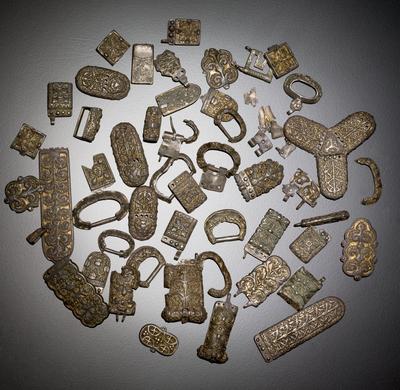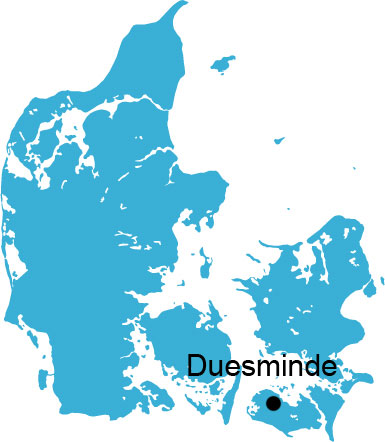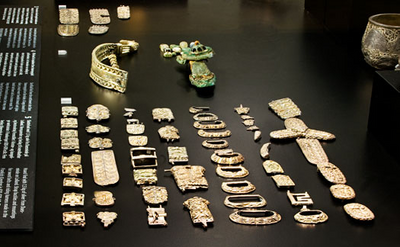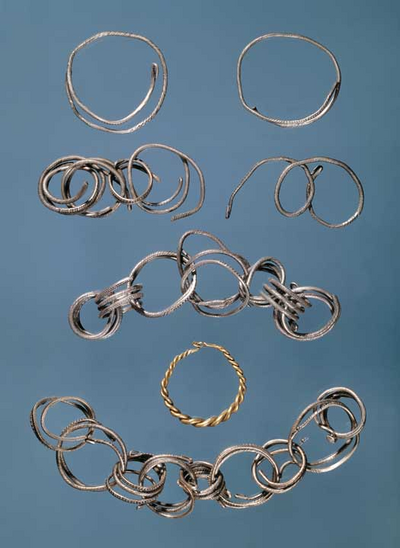The hoard from Duesminde
The find from 2002 consisted of about 50 pieces of silver, mainly buckles, strap fittings and pendants. There was a total of 1.3 kg of silver. Most of the silver objects were made in the Frankish kingdom in the period 820-870 AD. However, some of the objects were produced in Scandinavia during the period 850-950 AD, as revealed by the ornamentation. The composition of the hoard and the datings of the individual pieces show that it must have been buried in the middle of the 900s or later. At some point in recent times the hoard had been struck by a plough. The objects were therefore spread over an area of 10 x 15 metres. In the Viking Age it was not uncommon to bury silver hoards. Several examples are known from Denmark. The unusual thing about the Duesminde find is that it consists of fine weapon equipment of silver from the Frankish kingdom. Such objects have never before been found in such a high concentration anywhere in Europe! It is uncertain who buried the hoard and why. Perhaps it was a rich man who wanted to protect his valuables, or else the hoard represents the metal stock of a silversmith or a travelling merchant.




